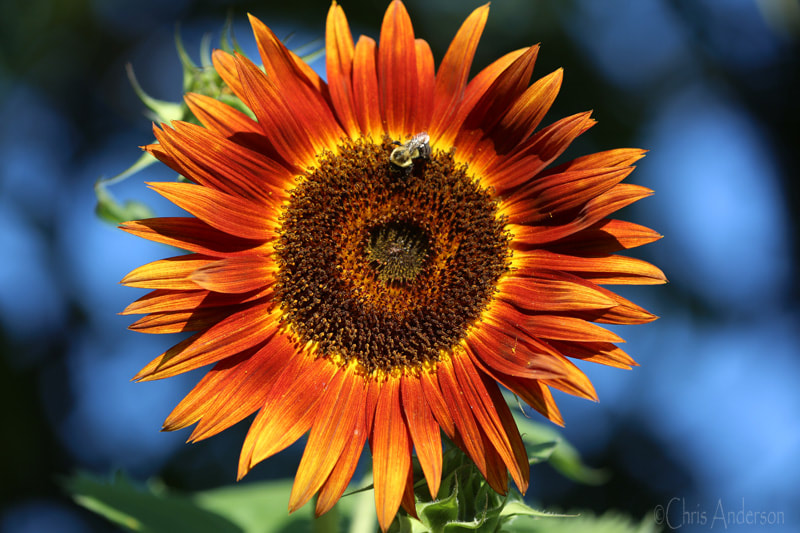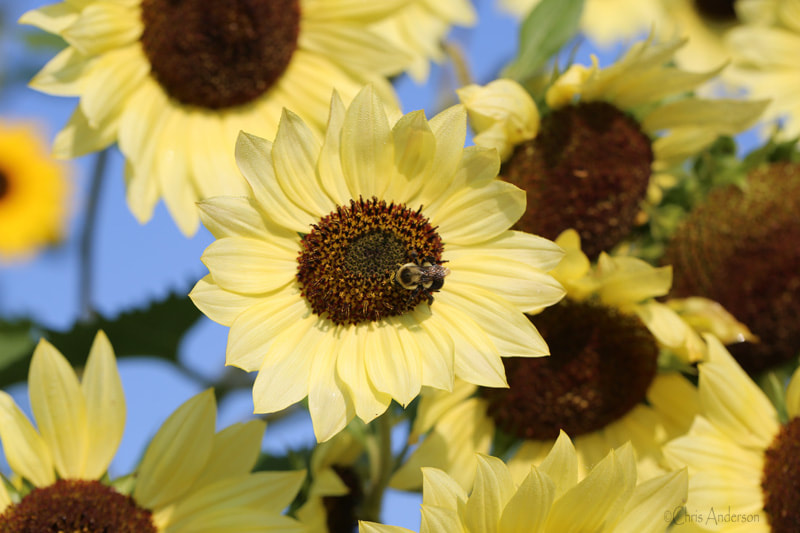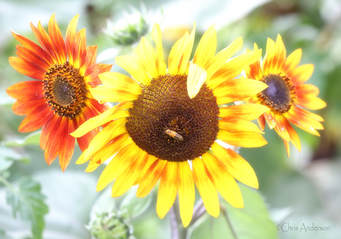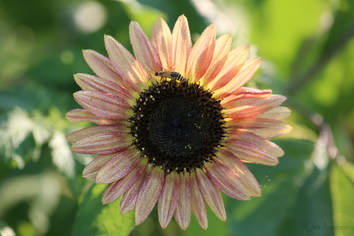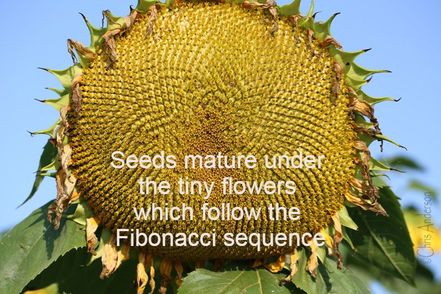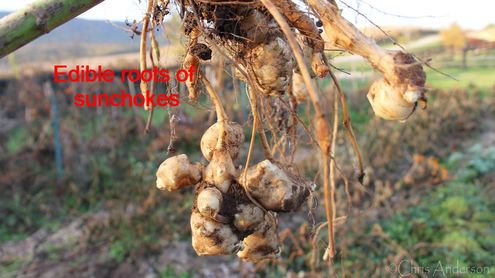|
As summer winds down, we celebrate one of the brightest and most enduring of flowers – the sometimes humble, often spectacular sunflower. There are over 70 species of sunflowers and, in Virginia, about eight native species. The cultivars grace home gardens in shades of bright russet, orange, pink and lemon yellow, attracting pollinators when in bloom with their spectacular colors. A classic standby of early homesteads, the sunflower provided beauty and a healthy snack with their seeds following blooming. Many Lepidoptera use the leaves as food. Birds relish them as well, particularly goldfinch who choose the varieties with smaller seeds to dine upon, leaving the huge Russian mammoth sunflowers to others. Recently it has become very dry in Virginia, with scant rain for two weeks and temperatures in the mid to upper 80s. As zinnias and dahlias curl and crisp in the hot temperatures and dry conditions, many of our native species thrive. One late blooming sunflower, helianthus tuberosus, continues to bloom, providing valuable nectar for late-season pollinators. Also known as Jerusalem artichoke or sunchoke, the roots of the this native sunflower grow deep, a necessity when supporting growth of up to 12’. The Latin name of tuberosus refers to the starchy potato-like nodes on the roots, favored by Native Americans from the Mohawk in the north to the Seminole in the south of Florida. Their natural range is as far west as Texas, so Kiowa and other tribes throughout the Midwest would have relished them as well. In Indigenous communities, there is a resurgence in growing and eating native foods and sunchoke is one such food that is receiving recognition for its nutritional and health benefits. They are particularly good for those with diabetes as they do not spike blood-sugar levels as do potatoes. They can be cooked like potatoes - boiled, roasted, made into soups or thrown into stir fries at the last minute as their hard crunchiness is similar to water chestnuts. Sunchokes are blooming now and can often be found along roadsides, in empty lots and next to rail roads. The roots can be harvested after first frost but will hold in the ground until late winter.
0 Comments
Your comment will be posted after it is approved.
Leave a Reply. |
Have a blog or blog idea?
Let us know (click) Other Blogs
VA Native Plant Society - click Brenda Clement Jones - click John Muir Laws' Blog - click Megan's Nature Nook - click Categories
All
Archives
September 2023
Blog Administrator:
Kathleen A. VMN since 2018 |
